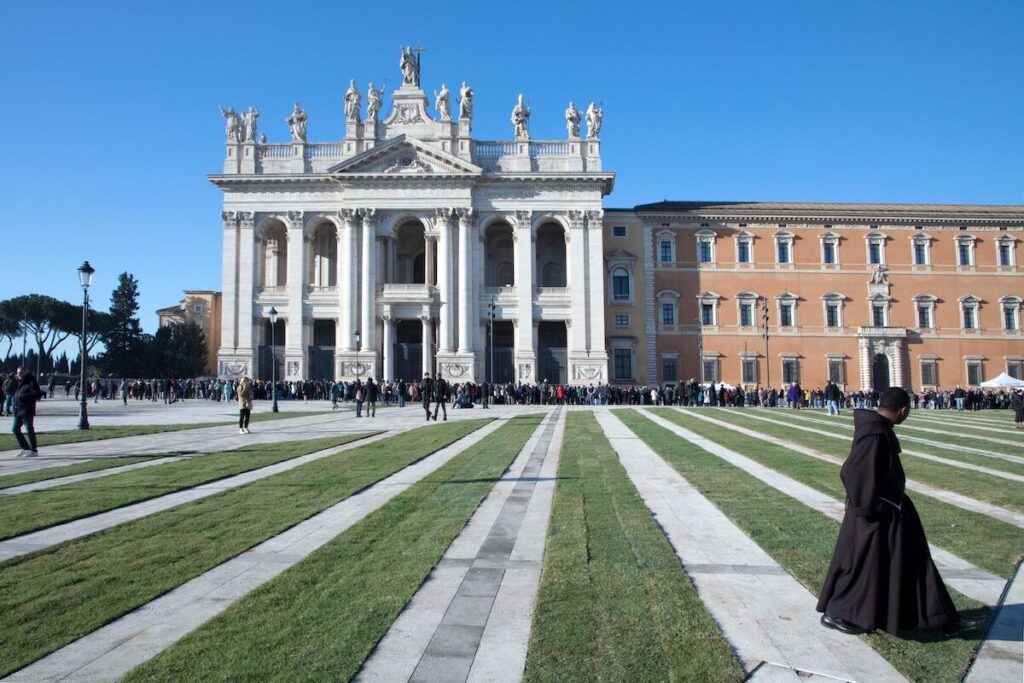This year, three public squares in Rome are getting pedestrian-friendly revamps. With fresh plantings of bushes and shade trees, water-permeable surfaces and reduced space for motor vehicles, the Piazza dei Cinquecento, Piazza del Risorgimento and Piazza Giovanni in Laterano are all reopening — or have just reopened — as cleaner, greener spaces. These follow close on the heels of the December inauguration of an €85 million ($88.6 million) pedestrianization project in Piazza Pia; there, several lanes of traffic abutting the River Tiber were buried in an underpass to make room for walkers.
Such infrastructure upgrades are not uncommon in Europe nowadays, as cities like Paris and Barcelona have drawn international attention for their efforts to become places where people take precedence over cars. But Rome’s projects stand out for two reasons. Firstly, they’re being carried out in a city that, despite its reputation as a stroller’s paradise, has fallen behind in the quality of its public spaces and is struggling to find ways to help tourists flow less disruptively around the city. And secondly, the street reforms are being driven in part by an institution not automatically associated with progressive urbanism — the Roman Catholic Church.


